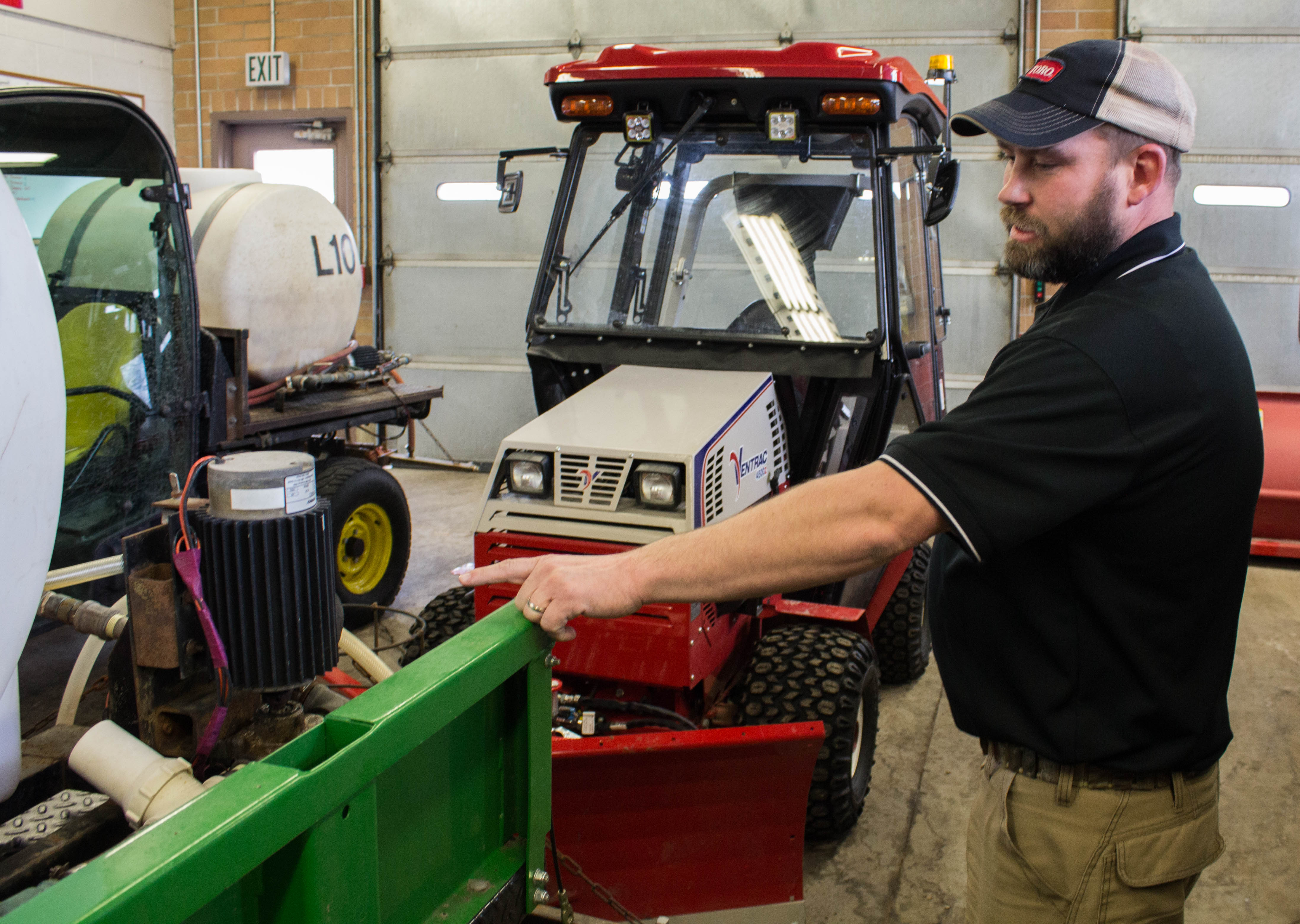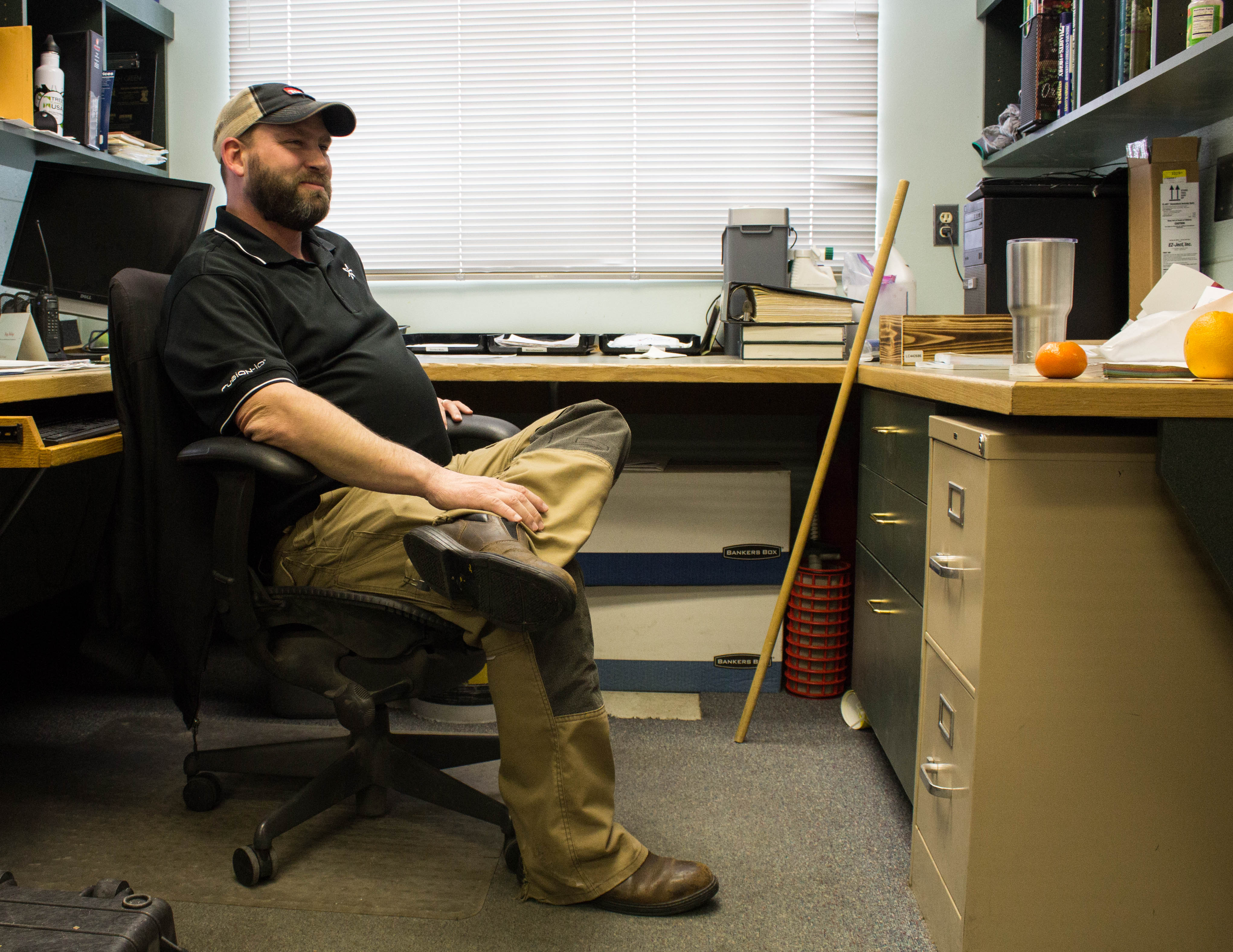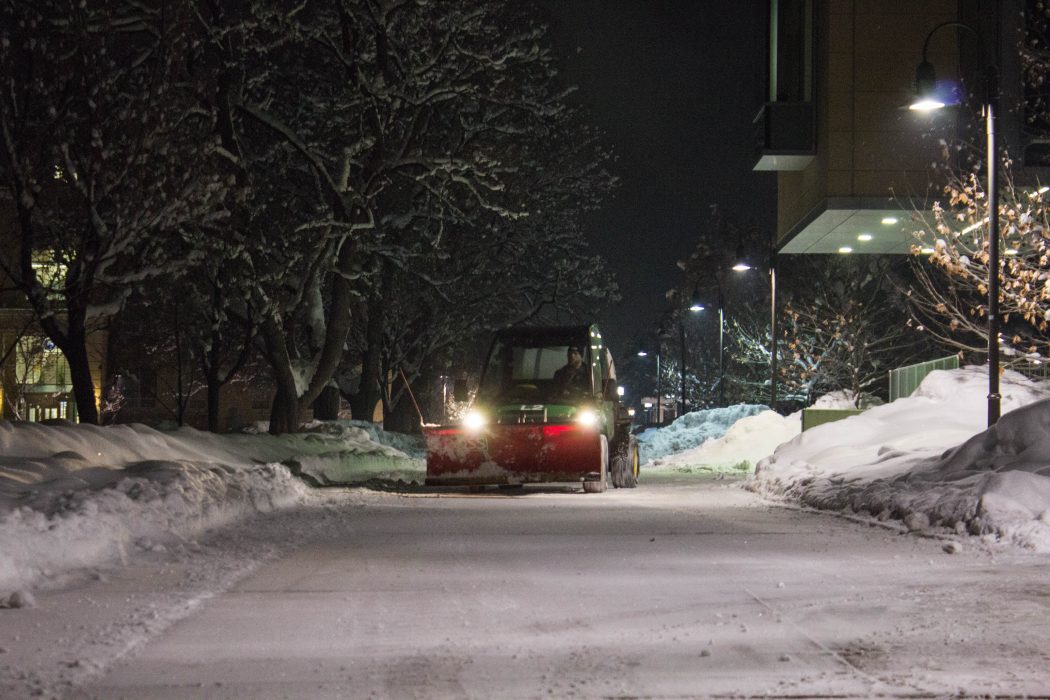Winter Wizards: USU’s landscape crew keeps campus clear of snow and ice
By the time Shane Richards got home on the night of Dec. 28, he could barely push open the front door.
With students off campus for winter break, Richards and his team of snow-removers can usually take it easy. But with a basketball game to be played in the Spectrum that evening — the conference-opener for the men’s team — and thousands of spectators expected on campus, Richards knew that someone needed to clear the thick snow that was piling up.
“This winter’s been a fun one — or not fun, depending on how you want to look at it,” Richards said.
But Richards and his crew got it done. By the time the crowds arrived to watch Utah State take on Boise State that night, the path to one of the most storied arenas in college basketball was clear.
Nobody thanked Richards and his team members on that night. And that’s OK with them. Snow removal is a hard and largely thankless job — but it’s one these Aggies are proud to do.
For Richards and his team, the job is difficult and exhausting, with crew members working as many as 50 or 60 hours in a week.

As manager, Richards oversees the landscape operations and maintenance crew, coordinating schedules and making route assignments. It’s a tight-knit crew, and it’s evident that Richards is proud of the team, like a father bragging about his children as he introduces them.
There’s Eric, who shovels snow around bike racks, benches, fire hydrants and other places the plows can’t get to.
And Jess, who is primarily responsible for snow and ice removal at the Innovation Campus, just off 1400 North between 600 East and 800 East.
Also Roy, who drives the tractors, and Austin, the mechanic, and Rachel, “a salt dog,” who spreads the brine and magnesium chloride solution on icy patches.
There’s Brett, running the skid steers, and Bob and Gilbert, who drive the trucks that clear the snow from the wide walkway through the middle of campus.
Finally there’s Brian Daines, a 20-year landscape operations veteran, taking the last few sips from his can of Mountain Dew.
“Brian, don’t say anything bad,” Richards warns. “Sometimes he drops F-words,” he explains.
“Flower?” Daines asks, obviously goading his boss. “That’s an F-word.”
“That’s his favorite F-word right there,” Richards says. The exchange draws a laugh from everyone.
Daines, the self-proclaimed “campus gardener,” takes the role of salt spreader when the weather prevents him from tending to his favorite F-words and the other plants around campus.
In his two decades of work for the university, Daines has seen the technology of snow removal change drastically. Magnesium chloride is commonly used for ice removal now, but USU maintenance crews were just starting to use it when Daines arrived.
The “mag” solution, more expensive than the saltwater brine mixture, is only used when the temperature drops below 15 degrees. Cost matters at large scales and this crew uses mag and brine on a very large scale — 20,000 gallons of brine and counting already this winter, far ahead of the pace set by the crew in past winters.
When no new snow has fallen, the crew reverts to “ice watch,” responding to calls and looking for slippery areas around campus. Oftentimes, the team will melt ice along a sidewalk only to see it freeze again a few hours later.
“We’ll melt it as many times as we need to,” Richards said. “Safety is the first priority, so whatever it takes to make it safe.”
Making campus safe enough to move around brings the biggest reward for the crew members, said Juan Hernandez.
Hernandez (“One of the best,” Richards proudly says, beaming) has been tasked with clearing the 124 steps of Old Main Hill, an important and visible responsibility.
“It’s a good feeling to make sure nobody gets hurt and everybody makes it to class safely,” Hernandez said. “It’s fulfilling to see people in the mornings going up the hill without sliding.”
On most days, shifts start at 6 a.m., running into the afternoon. Between the day crews and the night crews, the team is removing snow and ice from 6 in the morning until 9 at night, seven days a week.
The task gets more arduous when there is an overnight snowstorm. On those days, the crew gets called in as early as 3 a.m. in order to have campus cleared by the time people begin arriving.
Surprisingly, many on the team prefer coming in before dawn.
“We love storms where we can get in early,” Richards said. “If we can get in at four in the morning we can almost do all that in three hours and have campus beautiful and ready to go.”

Clearing snow is much harder when people are already on campus.
“It makes it more difficult because students are walking, so we’re trying to be safe and go slow,” Richards said.
Still, the crew can rid campus of two or three inches of snow in a few hours. If another storm, like the one that hit during winter break, rolled through when school is in session, though, it would be a much different story.
“If we get a foot and there’s students,” Richards said, “that would be rough.”
During those big storms, the crew has to start cutting back. The team has a priority snow removal route mapped out, which provides at least one entrance to every building on campus.
Even then, it’s difficult to get to everything in a timely manner.
“The students and everybody think it should be clean 24/7, but if the storm comes in at six in the morning there’s no way we can get it cleaned and taken care of by 7:30,” Daines said. “There’s maybe a built-in pressure on us, we want to have this safe for when the students and faculty show up and we sometimes are just not able to accomplish it.”
The most difficult challenge for the snow-removal crew is when a continual snowstorm hits, like the one on Dec. 28.
“My guys were exhausted, but they were also frustrated,” Richards said. “One, because they were exhausted but two, because it didn’t look like they did anything. They plowed, turned around and there were three inches on the ground again.”
Snow fell for 24 consecutive hours that day, dumping more than a foot by the time it was done. It took nearly two days of all-day snow removal to get to the priority areas.
A week passed before the crew could clean the other areas it needed to.
“Mother Nature doesn’t cooperate,” Richards said.
But Jesse, Brian, Juan, Eric, Roy, Austin, Rachel, Brett, Bob, Gilbert and Shane — everyone goes by first names on the team, even the boss — will continue working together to clear campus of whatever Mother Nature has to offer.
“That’s what we signed up for,” Hernandez said.
— thomas.sorenson@aggiemail.usu.edu
@tomcat340

